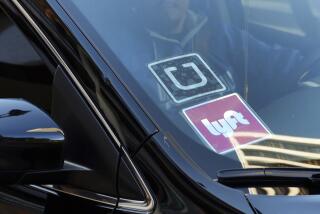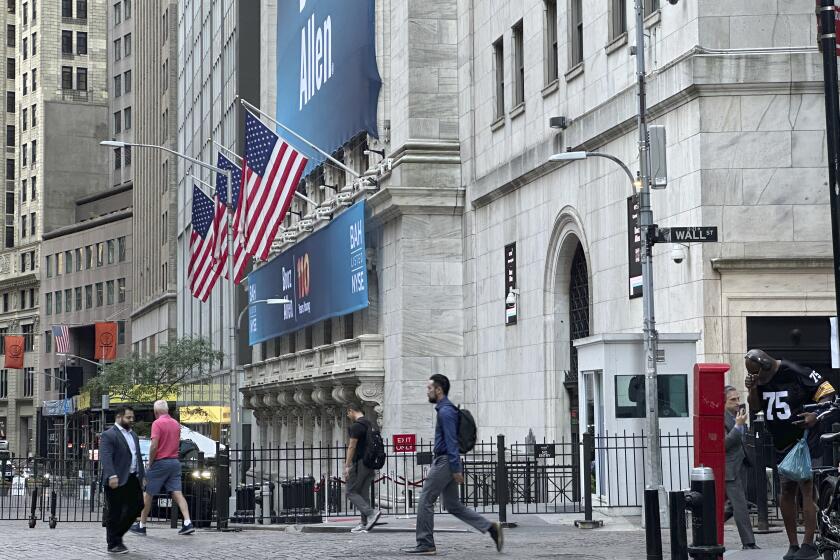Lyft cuts its mustache logo

Lyft is replacing its distinctive pink mustache logo with beacons.
- Share via
San Francisco — Lyft will ditch its mustache by the end of the year, retiring the hot-pink logo that helped define its $5.5-billion transportation business, the ride-hailing company announced Tuesday.
In place of the “glowstache” — the mustache-shaped device Lyft drivers mount on their dashboards to identify their vehicles as Lyft rides — drivers will soon mount a device called an Amp, which Lyft bills as “the rideshare industry’s first connected device.”
Like the glowstache, the Amp will sit on a driver’s dashboard to identify cars as Lyft rides, but it will also be synced to the Lyft smartphone app to change colors so passengers can better identify their ride.
On its backside, the Amp will display messages aimed at passengers and drivers — a passenger might be greeted by their first name, while a driver might be notified if they’re about to reach a ride milestone.
The company does not plan to show ads on the device.
On the outside, the Amp will display the Lyft name, ridding Lyft rides of the last remnant of the company’s mustachioed branding.
“You might not know what a glowstache or mustache was and what it meant,” Jesse McMillin, Lyft’s creative director, told Advertising Age. “Using the Lyft name as part of our brand identification just felt like a natural thing to do.”
As part of the rebranding, the company also launched new video ads taking aim at competitors such as Uber. The ads depict a fictional company called “RideCorp,” whose executives sit in a sleek, black conference room trying to understand Lyft’s growing popularity, and scheming for ways to undercut their business.
In the interview with AdAge, McMillin said the ads were not solely targeting Uber, but rather the broader set of competitors that are “overly corporate” and “impersonal.”
Uber did not immediately respond to a request for comment.
The introduction of the Amp comes about two years after Lyft retired its original brand identifier — a large, fuzzy, hot-pink mustache that drivers mounted to the grill of their car. The large ’stache was originally adopted to help the start-up get attention on the busy roads of San Francisco and Los Angeles.
The company has come a long way since its scruffy early days, scoring a $500-million investment and partnership with GM last year and securing more than 40% market share in its home city of San Francisco.
It remains a distant second behind Uber in the on-demand transportation industry, and this year fended off rumors that it was looking for a buyer.
Twitter: @traceylien







